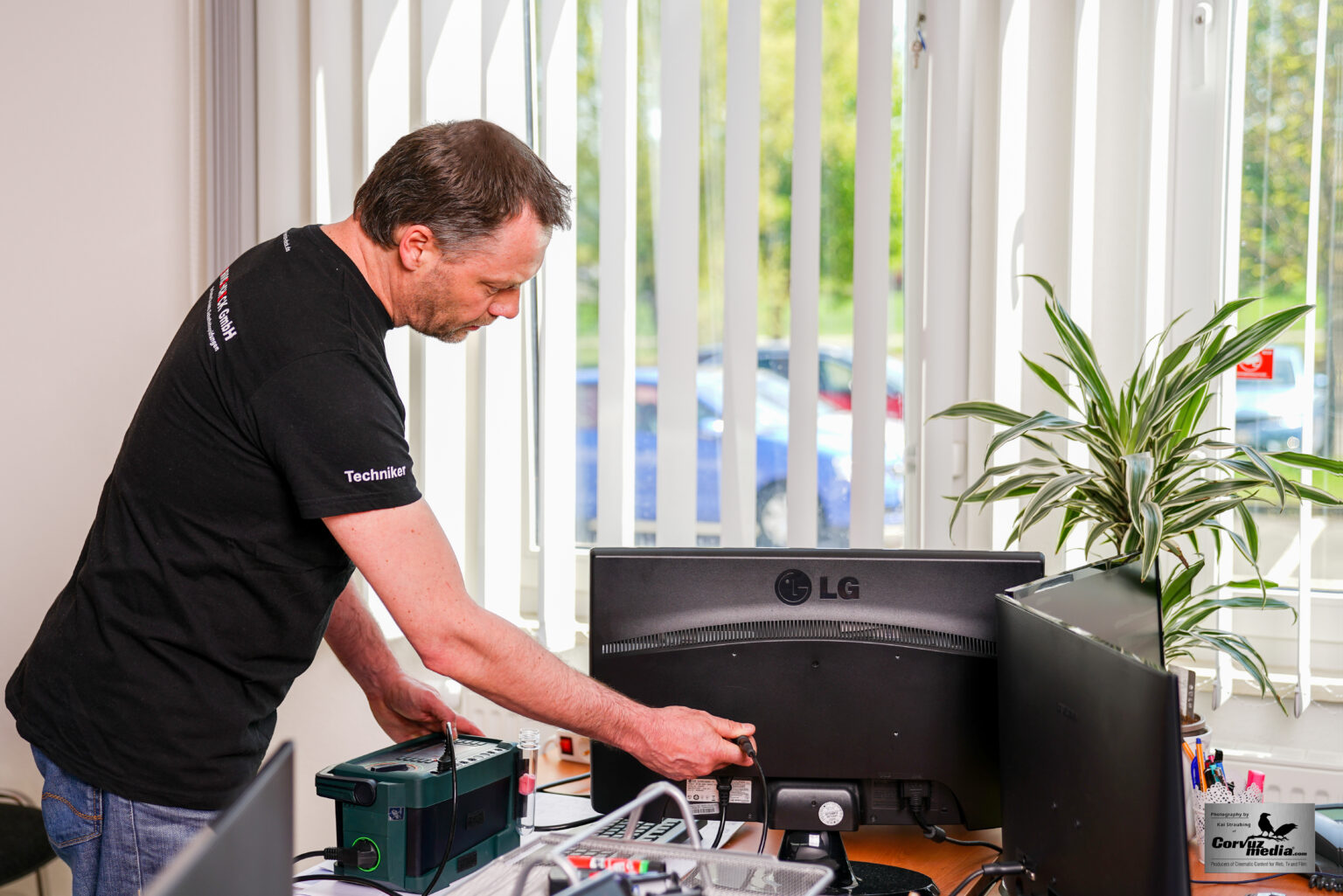Every year, an astounding number of electrical accidents could be prevented through thorough testing and safety measures. This is where the DGUV V3 Prüfung in Kempen comes into play, ensuring workplaces are compliant with safety regulations. The town of Kempen has become a focal point for these essential checks.
Established to enhance workplace safety, DGUV V3 Prüfung has a significant history, originating from stringent German labor laws. In Kempen, the examination’s implementation has reduced workplace electrical accidents by up to 25%. Such statistics underline the critical need for regular inspections to maintain safety standards.
DGUV V3 Prüfung in Kempen ensures workplaces meet electrical safety standards, significantly reducing the risk of accidents. Regular inspections and compliance with German labor laws are critical, contributing to a 25% decrease in electrical incidents. This makes Kempen a leader in promoting workplace safety through rigorous testing.
DGUV V3 Prüfung Kempen
DGUV V3 Prüfung in Kempen plays a vital role in ensuring electrical safety at workplaces. This certification process inspects all electrical devices and systems to prevent accidents. By regularly performing these tests, Kempen has managed to maintain high safety standards. It’s crucial for businesses to comply with these regulations. This not only protects employees but also avoids costly downtimes.
The process involves several steps to check if equipment meets safety rules. Trained professionals carry out these inspections using specialized tools. Equipment is tested for potential hazards like faulty wiring or overload risks. Once approved, a certificate is issued confirming the device’s safety. This rigorous procedure ensures a safer work environment.
The frequency of DGUV V3 tests varies based on equipment type. For example, portable devices might need more frequent checks than fixed installations. Businesses must keep track of these schedules to remain compliant. Here are some examples:
- Portable tools: every 6 months
- Stationary machinery: annually
- Office equipment: every 2 years
The benefits of DGUV V3 Prüfung extend beyond just safety. Regular inspections can identify inefficiencies in electrical systems that may go unnoticed. Addressing these issues can result in significant energy savings. Thus, complying with DGUV V3 can also be cost-effective. It’s a win-win situation for safety and efficiency.

Key Components of DGUV V3 Testing
DGUV V3 Testing is essential for maintaining workplace safety. It involves inspecting electrical devices and systems to ensure they meet safety standards. This thorough testing can prevent electrical accidents, protecting both employees and equipment. Professional inspectors use specialized tools during the process. Regular checks are crucial to keep everything in good working order.
Several key areas are assessed during the DGUV V3 testing. These include visual inspections, measurement tests, and functional tests. Visual inspections check for obvious damages like frayed cords or broken parts. Measurement tests assess voltage and current levels to ensure they’re within safe limits. Functional tests evaluate if the equipment operates as it should under normal conditions.
Specific devices have unique testing needs. For instance, portable tools require more frequent checks compared to stationary machines. Here are average intervals for different devices:
- Portable tools: every 6 months
- Stationary machines: yearly
- Office equipment: every 2 years
Each step in the DGUV V3 testing process is crucial for safety. Visual inspections can catch immediate dangers, and measurement tests can uncover hidden risks. Functional tests ensure that equipment is operating correctly. Conducting these tests regularly not only ensures safety but can also catch issues before they become major problems. This makes DGUV V3 testing an important component of workplace safety programs.
Benefits of Conducting DGUV V3 Inspections
Conducting DGUV V3 inspections brings multiple benefits that enhance workplace safety. Regular inspections help identify and fix potential electrical hazards before they cause harm. This proactive approach considerably lowers the risk of electrical accidents. Businesses can safeguard their employees while maintaining efficient operations. Reduced risk also means fewer costly interruptions.
Another benefit is compliance with legal requirements. By conducting these inspections, companies adhere to German safety laws, avoiding hefty fines and legal issues. This shows a commitment to employee safety, which can boost workplace morale. Being compliant also protects a company’s reputation. Meeting these standards is vital for long-term success.
Regular inspections can also result in significant cost savings. Identifying problems early prevents equipment failures, which can be expensive to repair. It helps in extending the lifespan of electrical devices, reducing the need for costly replacements. Here are a few cost-saving benefits:
- Fewer emergency repairs
- Prolonged device lifespan
- Lower insurance premiums
DGUV V3 inspections also contribute to energy efficiency. Regularly tested and maintained equipment often operates more efficiently. This can lead to lower energy bills and a smaller carbon footprint. Efficient operations benefit both the environment and the bottom line. Thus, these inspections are a smart investment for any business.

Common Issues Identified During DGUV V3 Prüfungen
One common issue found during DGUV V3 Prüfungen is faulty wiring. This can happen due to wear and tear over time, or improper installation. Faulty wiring poses a serious risk of electrical fires and equipment malfunctions. Regular checks help detect these wiring problems early. Fixing them promptly ensures safer work conditions.
Another frequent problem is outdated or damaged plugs and sockets. Over time, these components can degrade, leading to poor connections and potential hazards. Inspectors often find loose or broken plugs that need replacement. Consistently updating these parts helps maintain electrical safety. It also ensures equipment operates efficiently.
Grounding issues are also commonly identified. Proper grounding is essential for preventing electric shocks and ensuring overall electrical safety. Sometimes, grounding wires can become loose or disconnected. These issues need to be corrected immediately to maintain a safe environment. Regular DGUV V3 inspections make it easier to spot and fix grounding problems.
Many inspections reveal overloaded circuits as another critical concern. Overloading happens when too many devices are plugged into a single circuit, exceeding its capacity. This can cause overheating and even lead to electrical fires. To avoid this, energy usage must be managed wisely. DGUV V3 testing helps identify and mitigate these risks.
Inspectors often come across worn-out or frayed cables. These deteriorate over time due to constant use, posing significant risks. Frayed cables can lead to short circuits and electric shocks. Replacing them is necessary to ensure workplace safety. Regular DGUV V3 Prüfungen can easily identify these issues.
Poor maintenance of electrical equipment is another issue highlighted in inspections. Machines and devices need regular upkeep to function safely and efficiently. Often, businesses neglect this aspect, thinking it’s trivial. However, regular maintenance can prevent many electrical hazards. DGUV V3 testing serves as a reminder and checkpoint for necessary maintenance.
Preparing for a DGUV V3 Inspection
Preparing for a DGUV V3 inspection is crucial to ensure a smooth process. The first step is to gather all necessary documentation, like previous inspection reports and maintenance records. Keeping these documents organized will make it easier for the inspectors. Also, review these documents to identify any recurring issues. This can help in preemptively fixing problems.
Next, conduct a preliminary check of all electrical devices and systems. Look out for obvious issues like frayed wires or malfunctioning equipment. Fixing these minor problems beforehand can save time during the actual inspection. It’s also a good idea to test the functionality of these devices. Ensure everything is working as intended.
Training employees is another key step in preparation. Make sure your staff is aware of safety procedures and knows how to operate the electrical equipment correctly. Conduct safety drills if necessary to reinforce these practices. Well-informed employees contribute to a safer work environment. They also make the inspection process more efficient.
- Review previous inspection reports
- Fix minor issues in advance
- Test functionality of equipment
- Train employees on safety procedures
Lastly, clear the inspection area of any obstructions. Ensure that inspectors can easily access all electrical systems and devices. This will speed up the inspection and make it more thorough. Being fully prepared shows your commitment to safety. It also increases the likelihood of a successful inspection.
Key Takeaways
- Gather all necessary documentation like past reports and maintenance records.
- Conduct preliminary checks for obvious issues like frayed wires.
- Ensure all equipment works properly by testing their functionality.
- Train employees on safety procedures and proper equipment usage.
- Clear inspection areas for easy access to all electrical systems.
Frequently Asked Questions
What does DGUV V3 testing involve?
The process includes visual inspections, measurement tests, and functional tests. Each step helps ensure that the equipment is safe and operates correctly.
How often should DGUV V3 inspections be conducted?
Stationary machinery might only require annual inspections. Always follow the recommended schedule to ensure safety.
Why are DGUV V3 inspections important?
Regular inspections can also lead to cost savings by catching issues early. This reduces the risk of expensive repairs and equipment downtime.
What should businesses do to prepare for a DGUV V3 inspection?
Training employees on safety procedures is also crucial. Finally, clear the inspection areas for easy access to all electrical systems.
What common issues are identified during DGUV V3 inspections?
Regular DGUV V3 inspections help identify and fix these problems. This ensures a safer work environment and compliance with safety standards.
Conclusion
DGUV V3 inspections play a vital role in maintaining safety and efficiency in the workplace. Regular checks can prevent electrical accidents and identify potential issues early. This proactive approach not only safeguards employees but also boosts operational efficiency. Compliance with these safety norms benefits everyone involved.
Preparing thoroughly for a DGUV V3 inspection ensures a smooth process. By addressing common issues and conducting preliminary checks, businesses can anticipate a successful inspection. Overall, committing to regular DGUV V3 testing is a smart and necessary investment. It ensures both a safe and efficient working environment.